
The Vorthos Guide to Magic: The Gathering
Before going any further, we really need to speak about the various controversies surrounding the block. The issues presented in this section do not necessarily reflect our own views, and as always your mileage may vary on a lot of them. Please keep in mind that Battle for Zendikar was the first full story told through the new serialized web articles, since Tarkir did not follow the same episodic paradigm. It was obvious there were some growing pains with this story. Nissa is viewed by many to have been retconned in Magic Origins to shoehorn the previously deep character into a more shallow nature-lover for the plot of Battle for Zendikar. By the end of the story, it is clear that this was not as true as most people believed. Hints that this is simply a new attitude for Nissa and not a complete retcon are sprinkled throughout, and it is outright confirmed that the events of In the Teeth of Akoum still occurred, although elements of Nissa’s backstory have changed. The Joraga are still Elvish fascists, meaning Nissa's character change is not because they suddenly tempered the Joraga. Whether or not you believe her time between Worldwaker and In the Teeth of Akoum was enough to change her so much, that is up to you.
Another big point of contention is the more "comic book" style of a planeswalker team in the serialized stories, derided as "the Jacetus League." Your mileage may vary. While I personally do not have a problem with the current story direction, it was clear that the creative team was still getting used to the new style when putting together Battle for Zendikar’s story. Regardless of how you feel about the Gatewatch, we had almost six months of complaining, constructive and otherwise, and it becomes unwelcoming to new fans.
The biggest controversy, however, is how a small group of planeswalkers, whose powers were significantly diminished since the Mending, were able to destroy the Eldrazi. Beyond that, however, was the creative team's decision to have them kill not one, but two of the strongest beings in the universe on their first outing as a team. This was already incredibly unpopular, but Wizards made it even worse by spoiling the story themselves in both the fat packs and the Zendikar Art Book months before the story actually concluded. In fairness, the necessities of their product launches require something and putting the story on the cards can only go a few ways. Wizards has tried storyboarding the plot in the cards, but that led to awkward art with tangentially-related effects. I am personally a fan of the "pivotal moment" approach, in which a small number of cards cover key plot points.
That said, we are looking forward to where the story goes. Shadows Over Innistrad is poised to make up for many of the problems encountered in Battle for Zendikar.
Re-Setting the Stage
The Art of Magic: the Gathering: Zendikar, which for brevity, I will be referring to it as the Art Book from now on, is a print-only hardcover that is entirely dedicated to Zendikar lore. This book is a must-buy for any fans of Magic lore, because it has more information on the world-building of Zendikar than most Planeswalker's Guide articles. James Wyatt did an outstanding job putting this together; this is exactly the kind of Vorthos book that we need. If you would like to turn Zendikar into a D&D setting, this book can act as your setting guide... which Wyatt has also created in the form of Plane Shift: Zendikar, the title signaling future conversions are possible. I have helped quite a few people develop D&D campaigns on Zendikar since we published the first Archive Trap, and I have to say that this is a very welcome tool.
Since an enormous amount of groundwork has already been laid in our previous articles, we will not weigh this down with background details we already covered. However, we have learned a lot, both about Zendikar and how best to organize these articles since our first article in September of 2015. Zendikar is not the only thing that changed, and this summary will reflect that going forward.
Geography Redux
Zendikar, as a plane, changed significantly since we last saw it, but since most of that was removing locations, I will not retread information that we covered the first time. To start with, Sejiri and Bala Ged were completely wiped out by the Eldrazi, but Murasa survived the coming of the Eldrazi almost intact. As mentioned in the first Zendikar article, it is the most remote continent on Zendikar.
Over in Guul Draz, what was once the land bridge between Bala Ged and Guul Draz is now known as The Lake of Dust. The vampire city, Malakir, has been torn apart by a civil war among the vampires. The Free City of Nimana is the other major settlement of Guul Draz, although it is unclear how well it survived the Eldrazi and the vampire civil war.
Akoum, despite being the awakening point of the Eldrazi, still has thriving communities among the wastes. One of these communities is Ghostwatch, which is populated by Mul Daya and Kor that use the spirits of their ancestors to defend ruined stone forts unearthed by the Eldrazi, known as stone havens. The Tuktuk goblins have moved out of the mountains and into the wastes themselves, into the settlements of Grip Haven and Slab Haven. The town of Affa has survived by moving into a large underground cavern. Even Goma Fada is still rolling along, using outriders to make sure the dust that Ulamog's brood leaves behind is not too deep for their caravan to cross.
Ondu has not fared much better than the rest of the plane. All we really know about it is that people have fled from Ondu, and that at some point Zulaport moved to Beyeen, one of three small islands off the coast. We know this because Zulaport was a place Sorin and Nissa reached on foot, but the art book describes it as being on the island, meaning that it had to be moved (or its location was retconned).
Tazeem is the focus of Battle for Zendikar, with most of the plot taking place in and around the Sea Gate, an ancient dam that separates the ocean from the inland Halimar Sea. Halimar is home to Coralhelm Refuge, the largest Merfolk settlement on the plane, as well as the Tikal Harborage, a smaller settlement hidden closer to the sea. Inland from Sea Gate is Emeria, a massive floating ruin that has been broken apart further and further over the years. Also inland is the Oran-Rief forest, one of the few wild forests still remaining on Zendikar.
The new set gave us more clues to how the plane is laid out based on travel times and distances. Sejiri is at one of the poles, while we do not quite know where Murasa is. Akoum is connected to Bala Ged, which is in turn connected to Guul Draz. Because of how quickly and easily people have traveled from one continent to another, it is likely that Ondu is directly across the ocean from Akoum, while Tazeem is across from Guul Draz. If I were to frame it in terms of Earth geography, we believe that Ondu draws a parallel to North America, Tazeem to South America, Akoum to Europe, Guul Draz to Africa, and Bala Ged to the Middle East or Mediterranean. The oceans in between the continents are much smaller, as are the continents themselves.
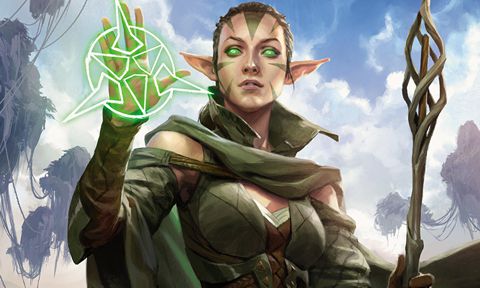
Damning your plane to consumption by eldritch monstrosities really does wonders for your attitude.
Oath of Nissa by Wesley Burt
History, Politics & Religion
The vampires of Zendikar got their most in-depth background to date in the Zendikar Art Book. Essentially, during the time of the story Stirring from Slumber, a group of Eldrazi cultists arise, believing the Eldrazi to be their gods and wishing to free them from imprisonment. These were the beings that built the Puzzle Tower, Tal Terig. They succeeded in opening the Eldrazi’s cage, allowing brood lineage to populate the plane and allowing the Eldrazi, Ulamog in particular, to transform them into the vampires we know today, to help the Eldrazi consume the plane. These original cultists became the Bloodchiefs, and once they were free of Eldrazi control, their memories faded to a vague recollection of enslavement, although it is implied that the former Ghet Bloodchief Tenihas had learned a great deal more. Around the time of the original Zendikar block, only about 12 Bloodchiefs remained. When the Eldrazi were released, Kalitas and the Ghet were turned back into servants of the Eldrazi. This led to a civil war known as the Culling, where the free vampires turned away the Eldrazi Thralls. The Culling, however, winnowed down the Bloodchiefs to just two: Drana and Kalitas himself. Before Battle for Zendikar, the free vampires were pushed out of Malakir and forced to flee across the continent.
The Elves of Zendikar have been all but wiped out by the time of Battle for Zendikar. The Tajuru remain the most populous tribe of elves, still scattered across the plane, although the Tajuru became nomadic, remaining in motion rather than risk annihilation in one place. The Joraga and Mul Daya are all but wiped out, as their homes were in the forests of Bala Ged. It is unclear how many remain. The Joraga were a militant, almost fascist tribe that purged any naturally occurring Animists and were distrusting of outsiders. The Mul Daya were smaller and more cult-like, led (supposedly) by an ancient ghost named Obuun. Some Mul Daya joined with other elf clans and some populate the stone havens uncovered by the Eldrazi devastation in Akoum.
Humans are the most varied culture on Zendikar. Towns are typically isolated and self-governing. The one thing that binds most humans together is angel worship. The first of these angels is Emeria, a vague memory of Emrakul that morphed over time into the idea of a defending angel.
The nomadic kor have no centralized home. They wander the plane in tribes and have an almost religious reverence for their ancestors. This trait has allowed some to survive in Ghostwatch by combining their ancestor magic with the Mul Dayans. The kor also worship three gods, in reality the Eldrazi Titans, whose true names they have forgotten. These gods are Talib (Kozilek), Mangeni (Ulamog), and Kamsa (Emrakul) — gods of the land, sea and sky, respectively.
The Merfolk follow a similar religion, although their names for the Eldrazi are closer to the true names: Cosi (Kozilek), Ula (Ulamog), and Em (Emrakul). Cosi in particular has an added connotation: in merfolk lore he is a trickster, and the focus of a small but vital subset of merfolk society. The merfolk are spread among various enclaves and settlements, the largest of which is Coralhelm. Coralhelm is headed by Noyan Dar, a former scholar and lullmage, while the smaller settlement of Tikal Harborage is headed by Thada Adel.
Most of the goblin tribes on Zendikar have been wiped out. Some were driven underground and were mutated by Eldrazi magic into Dark-Dwellers. Only the Tuktuk have persevered, moving into land already blighted by the Eldrazi, thriving through ingenuity and their ability to survive by eating almost anything.
Planeswalkers
The Original Zendikar Three
Since an enormous amount of groundwork has already been laid in our previous articles, we will not weigh this down with background details we already covered. However, we have learned a lot, both about Zendikar and how best to organize these articles since our first article in September of 2015. Zendikar is not the only thing that changed, and this summary will reflect that going forward.
Zendikar, as a plane, changed significantly since we last saw it, but since most of that was removing locations, I will not retread information that we covered the first time. To start with, Sejiri and Bala Ged were completely wiped out by the Eldrazi, but Murasa survived the coming of the Eldrazi almost intact. As mentioned in the first Zendikar article, it is the most remote continent on Zendikar.
Over in Guul Draz, what was once the land bridge between Bala Ged and Guul Draz is now known as The Lake of Dust. The vampire city, Malakir, has been torn apart by a civil war among the vampires. The Free City of Nimana is the other major settlement of Guul Draz, although it is unclear how well it survived the Eldrazi and the vampire civil war.
Akoum, despite being the awakening point of the Eldrazi, still has thriving communities among the wastes. One of these communities is Ghostwatch, which is populated by Mul Daya and Kor that use the spirits of their ancestors to defend ruined stone forts unearthed by the Eldrazi, known as stone havens. The Tuktuk goblins have moved out of the mountains and into the wastes themselves, into the settlements of Grip Haven and Slab Haven. The town of Affa has survived by moving into a large underground cavern. Even Goma Fada is still rolling along, using outriders to make sure the dust that Ulamog's brood leaves behind is not too deep for their caravan to cross.
Ondu has not fared much better than the rest of the plane. All we really know about it is that people have fled from Ondu, and that at some point Zulaport moved to Beyeen, one of three small islands off the coast. We know this because Zulaport was a place Sorin and Nissa reached on foot, but the art book describes it as being on the island, meaning that it had to be moved (or its location was retconned).
Tazeem is the focus of Battle for Zendikar, with most of the plot taking place in and around the Sea Gate, an ancient dam that separates the ocean from the inland Halimar Sea. Halimar is home to Coralhelm Refuge, the largest Merfolk settlement on the plane, as well as the Tikal Harborage, a smaller settlement hidden closer to the sea. Inland from Sea Gate is Emeria, a massive floating ruin that has been broken apart further and further over the years. Also inland is the Oran-Rief forest, one of the few wild forests still remaining on Zendikar.
The new set gave us more clues to how the plane is laid out based on travel times and distances. Sejiri is at one of the poles, while we do not quite know where Murasa is. Akoum is connected to Bala Ged, which is in turn connected to Guul Draz. Because of how quickly and easily people have traveled from one continent to another, it is likely that Ondu is directly across the ocean from Akoum, while Tazeem is across from Guul Draz. If I were to frame it in terms of Earth geography, we believe that Ondu draws a parallel to North America, Tazeem to South America, Akoum to Europe, Guul Draz to Africa, and Bala Ged to the Middle East or Mediterranean. The oceans in between the continents are much smaller, as are the continents themselves.

Damning your plane to consumption by eldritch monstrosities really does wonders for your attitude.
Oath of Nissa by Wesley Burt
The vampires of Zendikar got their most in-depth background to date in the Zendikar Art Book. Essentially, during the time of the story Stirring from Slumber, a group of Eldrazi cultists arise, believing the Eldrazi to be their gods and wishing to free them from imprisonment. These were the beings that built the Puzzle Tower, Tal Terig. They succeeded in opening the Eldrazi’s cage, allowing brood lineage to populate the plane and allowing the Eldrazi, Ulamog in particular, to transform them into the vampires we know today, to help the Eldrazi consume the plane. These original cultists became the Bloodchiefs, and once they were free of Eldrazi control, their memories faded to a vague recollection of enslavement, although it is implied that the former Ghet Bloodchief Tenihas had learned a great deal more. Around the time of the original Zendikar block, only about 12 Bloodchiefs remained. When the Eldrazi were released, Kalitas and the Ghet were turned back into servants of the Eldrazi. This led to a civil war known as the Culling, where the free vampires turned away the Eldrazi Thralls. The Culling, however, winnowed down the Bloodchiefs to just two: Drana and Kalitas himself. Before Battle for Zendikar, the free vampires were pushed out of Malakir and forced to flee across the continent.
The Elves of Zendikar have been all but wiped out by the time of Battle for Zendikar. The Tajuru remain the most populous tribe of elves, still scattered across the plane, although the Tajuru became nomadic, remaining in motion rather than risk annihilation in one place. The Joraga and Mul Daya are all but wiped out, as their homes were in the forests of Bala Ged. It is unclear how many remain. The Joraga were a militant, almost fascist tribe that purged any naturally occurring Animists and were distrusting of outsiders. The Mul Daya were smaller and more cult-like, led (supposedly) by an ancient ghost named Obuun. Some Mul Daya joined with other elf clans and some populate the stone havens uncovered by the Eldrazi devastation in Akoum.
Humans are the most varied culture on Zendikar. Towns are typically isolated and self-governing. The one thing that binds most humans together is angel worship. The first of these angels is Emeria, a vague memory of Emrakul that morphed over time into the idea of a defending angel.
The nomadic kor have no centralized home. They wander the plane in tribes and have an almost religious reverence for their ancestors. This trait has allowed some to survive in Ghostwatch by combining their ancestor magic with the Mul Dayans. The kor also worship three gods, in reality the Eldrazi Titans, whose true names they have forgotten. These gods are Talib (Kozilek), Mangeni (Ulamog), and Kamsa (Emrakul) — gods of the land, sea and sky, respectively.
The Merfolk follow a similar religion, although their names for the Eldrazi are closer to the true names: Cosi (Kozilek), Ula (Ulamog), and Em (Emrakul). Cosi in particular has an added connotation: in merfolk lore he is a trickster, and the focus of a small but vital subset of merfolk society. The merfolk are spread among various enclaves and settlements, the largest of which is Coralhelm. Coralhelm is headed by Noyan Dar, a former scholar and lullmage, while the smaller settlement of Tikal Harborage is headed by Thada Adel.
Most of the goblin tribes on Zendikar have been wiped out. Some were driven underground and were mutated by Eldrazi magic into Dark-Dwellers. Only the Tuktuk have persevered, moving into land already blighted by the Eldrazi, thriving through ingenuity and their ability to survive by eating almost anything.
The Original Zendikar Three
Ugin has returned to Zendikar to assess the damage to the hedron network and to find a way to trap the Eldrazi once more. Ugin still wants to study the Eldrazi and believes they have an important place in the multiverse’s ecosystem. He is not above taking the Obi-Wan approach of giving people information ‘from a certain point of view’ to get them to do as he wants. While he may seem like the "good" version of Nicol Bolas, do not mistake his actions for benevolence, as he takes the extreme long view and is perfectly willing to sacrifice the people of Zendikar. Sorin Markov is attempting to find and enlist Nahiri’s aid at Ugin's direction, but neither planeswalker is present during the events of Battle for Zendikar. The Zendikar Art Book revealed that Sorin was Nahiri's mentor. Her first planeswalk brought her to his attention, and he taught her about the multiverse, they traveled the multiverse together. According to the book, they spent centuries together. During this time they developed a bond, to the point where Nahiri considers him a paternal figure, before they encountered Ulamog destroying the unknown plane in The Lithomancer. The book also says they did try to kill the titan, but failed. Plane Shift: Zendikar mentions that the Eldrazi titans were not the only ones worshiped as gods in the last 6,000 years. Ugin, Sorin and Nahiri were as well. Nahiri was also known as the prophet of Talib. Currently, Nahiri harbors resentment against Sorin for something he did or didn't do some time ago.
The Gatewatch
The Gatewatch
Nissa Revane has changed since the original Zendikar block. Her origins were retconned somewhat from what was originally stated, as her father was no longer around during her childhood, and she was not turned in by her parents for un-Joraga sentiments. Instead, she is now an animist. However, it is clear from Battle for Zendikar that her history with black-aligned magic and the elves of Lorwyn is still at least somewhat intact. What people view as a major character change is easily explained by the fact that her old attitude is directly responsible for the near-destruction of her plane. If that is not a cause for character growth, I do not know what is.
Gideon Jura was involved in Zendikar’s conflict since he came across the plane while tracking Chandra after the events of The Purifying Fire. Even though he is the only member the Gatewatch not directly responsible for the Eldrazi’s release, he is still the most committed to the fight outside of Nissa herself. Too committed, in fact, costing him as he splits his time between Ravnica and Zendikar, ending with a shank from Krenko and requiring healing before returning to the fight.
Jace Beleren has become the Living Guildpact since we saw him last, but he still feels a deep desire to assist Zendikar, which is why he agrees to help Gideon defend it. This is the first of what I am sure is going to be many absences from Ravnica, which I am totally 100% completely sure is not going to come back to bite him. Jace is the only member of the Gatewatch to not get a planeswalker card in the Battle for Zendikar block.
Chandra Nalaar’s background may have changed in her origin story, but she is still as impulsive as ever. That said, she ends up turning down Gideon and Jace’s request for help to stick to her responsibilities at Keral Keep, the Regathan monastery at which she lives. That responsibility chafes at her, though, and she is torn on how to proceed and what responsibilities to embrace and which to let go.
Wildcards
Gideon Jura was involved in Zendikar’s conflict since he came across the plane while tracking Chandra after the events of The Purifying Fire. Even though he is the only member the Gatewatch not directly responsible for the Eldrazi’s release, he is still the most committed to the fight outside of Nissa herself. Too committed, in fact, costing him as he splits his time between Ravnica and Zendikar, ending with a shank from Krenko and requiring healing before returning to the fight.
Jace Beleren has become the Living Guildpact since we saw him last, but he still feels a deep desire to assist Zendikar, which is why he agrees to help Gideon defend it. This is the first of what I am sure is going to be many absences from Ravnica, which I am totally 100% completely sure is not going to come back to bite him. Jace is the only member of the Gatewatch to not get a planeswalker card in the Battle for Zendikar block.
Chandra Nalaar’s background may have changed in her origin story, but she is still as impulsive as ever. That said, she ends up turning down Gideon and Jace’s request for help to stick to her responsibilities at Keral Keep, the Regathan monastery at which she lives. That responsibility chafes at her, though, and she is torn on how to proceed and what responsibilities to embrace and which to let go.
Wildcards
Kiora returns to Zendikar arrogant and triumphant after surviving her encounter with Thassa, the sea god of Theros. Her prize: Thassa’s Bident, a weapon so powerful that it can control the seas themselves.
Ob Nixilis has been hard at work since the destruction wrought by the Eldrazi let him feel his spark once more. He has dug up a Khalni Heart, a locus of Zendikar’s mana, and is preparing a ritual to channel that energy into himself and allow his spark to re-emerge.
Legends
The Eldrazi Titans
Ob Nixilis has been hard at work since the destruction wrought by the Eldrazi let him feel his spark once more. He has dug up a Khalni Heart, a locus of Zendikar’s mana, and is preparing a ritual to channel that energy into himself and allow his spark to re-emerge.
The Eldrazi Titans
Ulamog and Kozilek have devastated Zendikar since we last saw the plane, with Bala Ged and Sejiri completely destroyed and many other continents not faring much better. The Eldrazi exist in both the physical realm and as astral beings in the Blind Eternities, and after their long imprisonment they need to absorb mana to return to their astral forms. The Zendikar Art Book states that Emrakul recovered the fastest of the trio and has already left the plane for parts unknown. Ulamog is the most immediate threat, consuming the surface world, but Kozilek has insidiously remained out of sight, devouring Zendikar from within. The three titans are explicitly mentioned in the art book as the known Eldrazi, implying that it is a possibility that more exist. Of note is that each titan has been given a realm of powers, and while they all interact with mana, they do not do it in the same way. Ulamog consumes, Kozilek distorts reality and perception, and Emrakul corrupts biology and undoes gravity. It is mentioned during the block that Kozilek is not a creator, unlike his eldest sibling, presumably Emrakul. Because of the nature of her corruption, Emrakul's spawn may actually be the living beings of the plane she is on, mutated, as opposed to being grown or spontaneously appearing like the other titans. While the original Zendikar made it seem that all the Eldrazi did was consume, it has become clear there is a greater purpose behind their existence. What that purpose is remains unclear, although one of the implications is that they cleanse broken planes, which could mean that they are natural forces of entropy in the multiverse. Interestingly, it is implied in several places that the planeswalker spark provides a measure of protection against the Eldrazi, explaining why the planeswalkers in the story survive attacks that outright kill normal people, and especially why Gideon doesn't "poof" into dust when physically touching Ulamog.
Allied Leaders
Allied Leaders
Tazri is Vorik’s lieutenant, and was the presumed successor as leader of the Zendikari forces until Gideon’s arrival. In truth, her bad attitude is the result of being cursed for mercy killing an angel in her youth, which halted her rapid advancement as a caravan guard and left her a hopeless, bitter mess.
Munda is known as The Spider, and is a squad leader for the Zendikari allied forces. He is unique in his duel wielding of his hook blades, and is exceptionally skilled at capturing opponents using his ropes (hence the nickname). He is one of the key leaders of the allied forces, representing the Kor forces.
Jori En is a Sea Gate scholar who assisted in the study of hedrons. When her entire party perishes, she is left with key knowledge that sets the events of Battle for Zendikar in motion.
Noyan Dar was a Sea Gate scholar and lullmage ridiculed because he believed that the three gods were actually destroyers. If not for the Eldrazi, Noyan Dar might have become a spy master, as he was slowly creating a network of informants answering to himself and trading in secrets. He is currently the leader of Coralhelm refuge and has turned his lullmage skills on their head, become a roilmage to use the plane’s strength against the Eldrazi.
Drana is the Kalastria Bloodchief. When the Eldrazi were released, she resisted Ulamog’s mental control and instead rallied the other free vampires to fight those who fell under Ulamog’s thrall. They succeeded, but at a heavy cost. Most of Guul Draz and Malakir were destroyed in the ensuing war.
Zada of Slab Haven is a stone-cold killer, the current leader of the Tuktuk tribe, and the main reason why the tribe continues to survive and thrive. The tribe made a habit of eating rocks, especially "magic rocks," or hedrons, to help them survive. One day, Zada realized that their leader of 50 years, Tuktuk the Returned, was the biggest, most magical rock of all. And so they killed and ate Tuktuk, and Zada became the new chief.
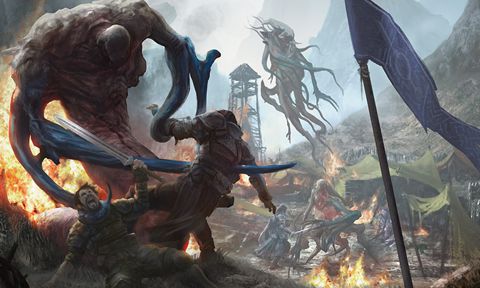
Gideon was gone for like, two days. This is why we can't have nice things.
Gruesome Slaughter by Aleksi Briclot
Minor Characters
Munda is known as The Spider, and is a squad leader for the Zendikari allied forces. He is unique in his duel wielding of his hook blades, and is exceptionally skilled at capturing opponents using his ropes (hence the nickname). He is one of the key leaders of the allied forces, representing the Kor forces.
Jori En is a Sea Gate scholar who assisted in the study of hedrons. When her entire party perishes, she is left with key knowledge that sets the events of Battle for Zendikar in motion.
Noyan Dar was a Sea Gate scholar and lullmage ridiculed because he believed that the three gods were actually destroyers. If not for the Eldrazi, Noyan Dar might have become a spy master, as he was slowly creating a network of informants answering to himself and trading in secrets. He is currently the leader of Coralhelm refuge and has turned his lullmage skills on their head, become a roilmage to use the plane’s strength against the Eldrazi.
Drana is the Kalastria Bloodchief. When the Eldrazi were released, she resisted Ulamog’s mental control and instead rallied the other free vampires to fight those who fell under Ulamog’s thrall. They succeeded, but at a heavy cost. Most of Guul Draz and Malakir were destroyed in the ensuing war.
Zada of Slab Haven is a stone-cold killer, the current leader of the Tuktuk tribe, and the main reason why the tribe continues to survive and thrive. The tribe made a habit of eating rocks, especially "magic rocks," or hedrons, to help them survive. One day, Zada realized that their leader of 50 years, Tuktuk the Returned, was the biggest, most magical rock of all. And so they killed and ate Tuktuk, and Zada became the new chief.

Gideon was gone for like, two days. This is why we can't have nice things.
Gruesome Slaughter by Aleksi Briclot
- Kalitas is the Ghet Bloodchief, successor to Tenihas, who coveted lore on the ancient gods. When the Eldrazi were freed, Kalitas willingly became Ulamog’s thrall and retained his intelligence, something none of the other thralls managed. He and his thralls were pushed out of Malakir by the free vampires.
- Thada Adel is the leader of Tikal Harborage, and is still in the business of tracking down rare artifacts. She does not appear in the main story, but the Zendikar Art Book mentions that she does not like Noyan Dar because he attempted to recruit her into his organization.
- Ayli is a kor cleric, formerly devoted to the goddess Kamsa (Emrakul). When the Eldrazi were released, she did not lose her faith and instead continued to believe in their divinity. She is now a high priest of the Eldrazi cult known as the Eternal Pilgrims.
- Mina and Denn are Mul Daya Greenweavers and are part of the few remaining elves of their tribe after the fall of Bala Ged. Seperated from the rest of their people, they seek the Tajuru leadership in the hopes of finding aid for their people and perhaps even uniting the elven people.
- Omnath is back, pissed, is presumably fighting underground.
- Lorthos is implied by the Zendikar Art Book as the possible Moon Kraken from In the Teeth of Akoum because of his relationship with Speaker Sutina.
- Anowon is responsible for giving Nissa the last seeds of trees now extinct because of the Eldrazi. He wanted her to flee and plant them on another plane so that Zendikar could live on, a major source of conflict for Nissa throughout the block.
- Vorik is the former captain of the Sea Gate militia and current commander of the allied forces.
- Turi is Kiora’s younger sister
- Tenihas is the former Ghet Bloodchief
Did we miss anything? Let us know in the comments or on the forum, and we’ll address it in future updates. Have a suggestion for something you’d like to see? Let us know, and we could address it in a future column. You can also follow me on twitter @Jay13x.
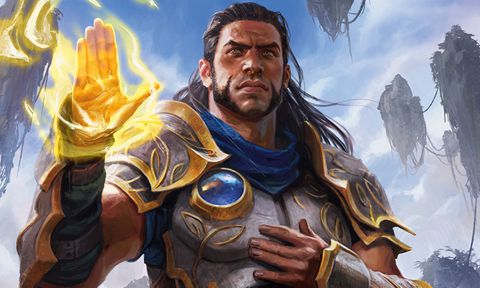
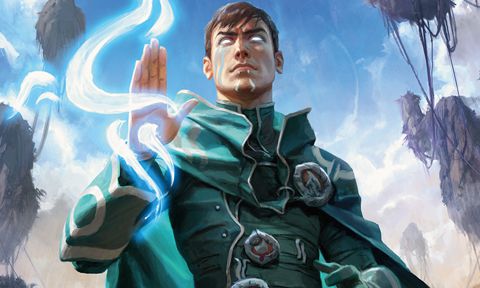
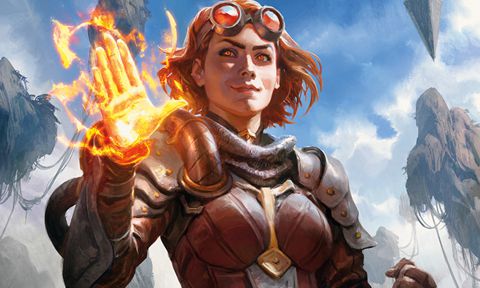
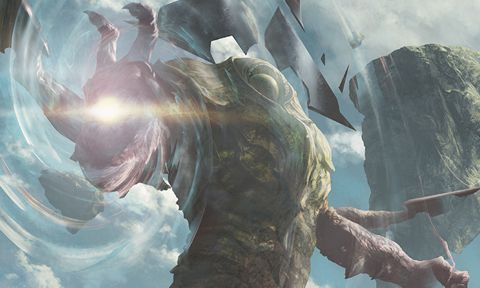
-
View User Profile
-
Send Message
Posted Apr 30, 2020-
View User Profile
-
Send Message
Posted Apr 30, 2020Speaking of geography, just one correction: Zulaport has always been in Beyeen, as per the Planeswalker's Guide. In The Teeth of Akoum, as mentioned, is just inaccurate.
"Zulaport
A transient community of mages, explorers, and artisans, of mixed races and origins, lives on the coast of Beyeen in a town called Zulaport. The economy of Zulaport is believed to be controlled to a powerful vampire named Indorel, who uses a network of goblin, human, and ogre thugs to ensure herself a cut of all the trade that happens around Beyeen."
-
View User Profile
-
Send Message
Posted May 24, 2016-
View User Profile
-
Send Message
Posted May 24, 2016-
View User Profile
-
Send Message
Posted May 3, 2016"Tuktuk the Returned, was the biggest, most magical rock of all. And so they killed and ate Tuktuk."
-
View User Profile
-
Send Message
Posted May 3, 2016